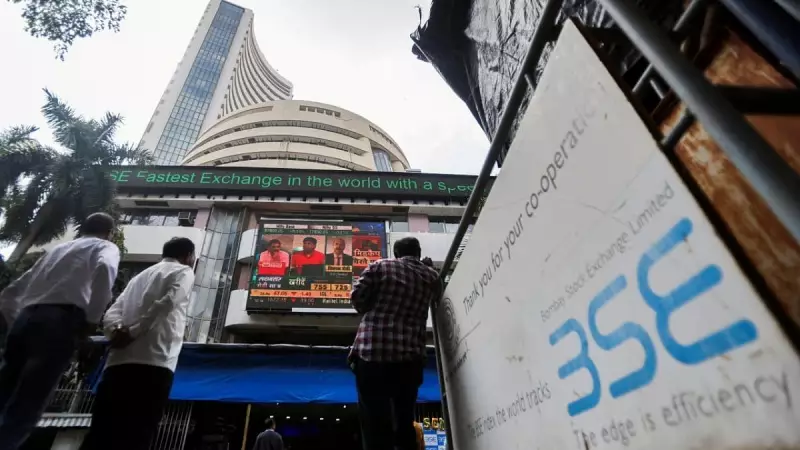
Indian equity markets extended their losing streak for the second consecutive session on Wednesday, caught in a whirlwind of volatility as foreign institutional investors continued to pull funds from domestic equities. The benchmark indices witnessed sharp fluctuations throughout the trading day, reflecting growing investor anxiety.
Market Performance Highlights
The BSE Sensex concluded the session at 72,488.99, registering a decline of 117.58 points or 0.16%. Meanwhile, the NSE Nifty settled at 22,004.70, down 22.25 points or 0.10%. The trading session was characterized by significant volatility, with both indices swinging between gains and losses before ending in negative territory.
Sectoral Performance: Winners and Losers
The market breadth told a story of widespread concern, with 21 of the 30 Sensex constituents closing in the red. Banking heavyweights emerged as the primary drag on the indices, while select auto and FMCG stocks provided some cushion against the downturn.
Key sector performances included:
- Banking stocks leading the decline
- IT companies facing persistent selling pressure
- Auto and FMCG sectors showing resilience
- Mid-cap and small-cap indices underperforming
Foreign Institutional Investors Drive Selling Pressure
The primary catalyst behind the market weakness remained the sustained selling by foreign institutional investors. According to exchange data, FIIs offloaded equities worth ₹1,874.54 crore on Tuesday, continuing their cautious approach toward emerging markets amid global uncertainty.
Domestic institutional investors attempted to counterbalance the foreign outflow, purchasing shares worth ₹1,294.20 crore. However, their buying power proved insufficient to overcome the selling pressure from overseas investors.
Expert Analysis and Market Outlook
Market analysts attribute the current volatility to multiple factors, including:
- Persistent FII selling in Indian equities
- Global bond yield movements affecting fund flows
- Valuation concerns in certain market segments
- Geopolitical tensions impacting risk appetite
Technical indicators suggest that the Nifty faces immediate resistance around the 22,150 level, while support is positioned near 21,850. The market is likely to remain range-bound until clear directional cues emerge from either domestic triggers or global developments.
What This Means for Investors
The current market phase presents both challenges and opportunities for market participants. Long-term investors might view corrections as buying opportunities in quality stocks, while short-term traders need to brace for continued volatility. The focus now shifts to corporate earnings, monsoon progress, and global economic data for future market direction.





